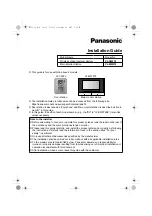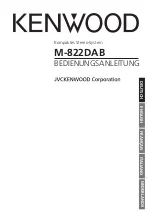
13
www.
neilmed
.com
constant irritation.
Q32.
Does rhinitis or sinusitis affect asthma?
It has been established that there is a defi nite correlation
between the symptoms of rhinitis, chronic sinusitis and
asthma. This is based on the unifi ed or united airway
disease, as all the areas are contiguous. Curing or
reducing rhinitis or sinusitis may improve the symptoms
of asthma signifi cantly. Approximately 80% of the
patients suffering from allergic asthma have coexisting
allergic rhinitis.
Q33.
What are allergens or allergy inducing particles?
Allergens are usually organic particles that attach to
the nasal mucosa or respiratory mucosa and lead to
the development of an antibody, which creates a series
of chemical reactions leading to allergic symptoms.
Everybody’s reaction to allergen exposure is different.
The same amount of exposure to allergy particles can
cause mild, moderate, or severe reactions in different
people. Some may not have any reactions at all. Those
with moderate to severe reactions will have symptoms.
Q34.
Can you name a few allergens?
There are indoor allergens as well as outdoor allergens.
Examples of indoor allergens include dust mites, molds,
pet dander (from animals and birds) and pests. Examples
of outdoor allergens are pollen, grass, wood dust, and
mold. Other substances such as cigarette smoke,
perfumes and aerosol spray can be irritants and worsen
allergy and sinus symptoms, or can act as allergens
themselves.
Q35.
Are allergens always visible?
Most individual allergens are not visible. Dust mites
are a typical example. They are not visible to the naked
eye, yet they are present in every house. Dust mites are
microscopic creatures that feed on human skin fl akes
and are present in mattresses, pillows, carpets and
upholstery.
Q36.
How do I reduce the problem of dust mites?
Clean all the areas where dust may be collecting. Carpets
and sofa upholstery should be vacuumed on a regular
basis. Wash pillow cases, sheets and blankets in hot
water. Enclose mattresses and pillows in special allergy
proof encasements. You can also contact an allergy care
or supply company for more details.
Q37.
What is mold?
Mold is a fungus. It can be present in any area where it
is damp and warm, especially in basements, bathrooms,
kitchens and water damaged areas, such as wood,
carpets, water coolers and heater fans.
Q38.
What is pet dander?
Any pet with hair or feathers will shed dander. These tiny
particles come from its skin. Dander is a very common
cause of indoor allergies in the home and in other areas
where animals and birds are raised.
Q39.
What is seasonal allergic rhinitis?
Allergy symptoms that bother you only at certain times of
the year, such as spring or autumn, are commonly called
hay fever, or seasonal allergic rhinitis. These symptoms
are commonly caused by pollens and occasionally molds.
Q40.
What is perennial allergic rhinitis?
This occurs when a person develops symptoms
throughout the year whenever he or she is exposed to
5003S-BRO-HYDP_Rev01_hydropulseBRO.indd 13
5003S-BRO-HYDP_Rev01_hydropulseBRO.indd 13
12/26/17 9:50 AM
12/26/17 9:50 AM


































